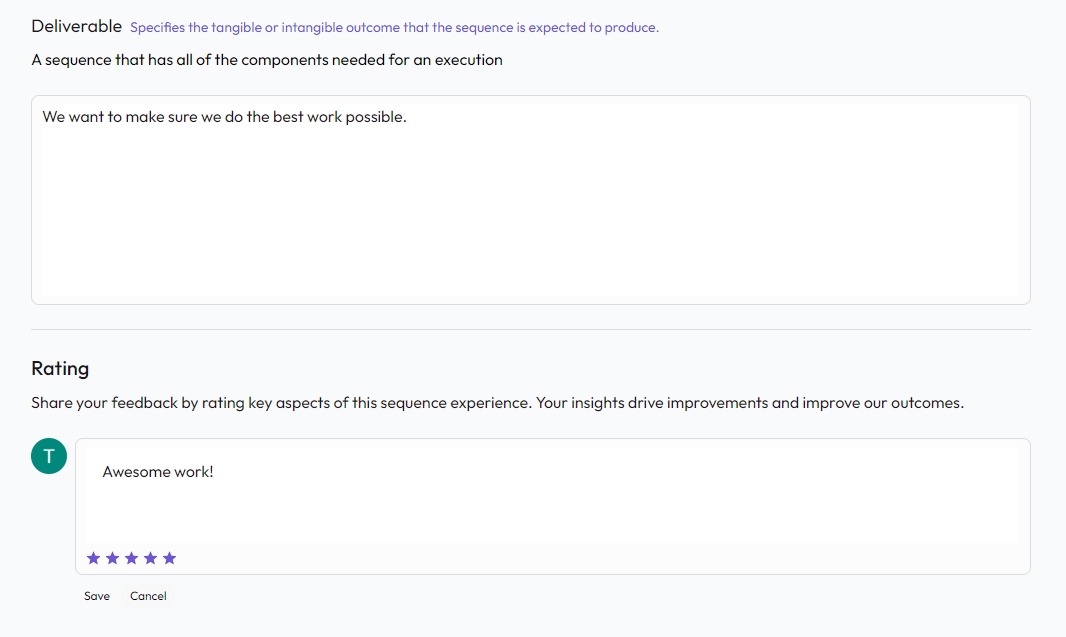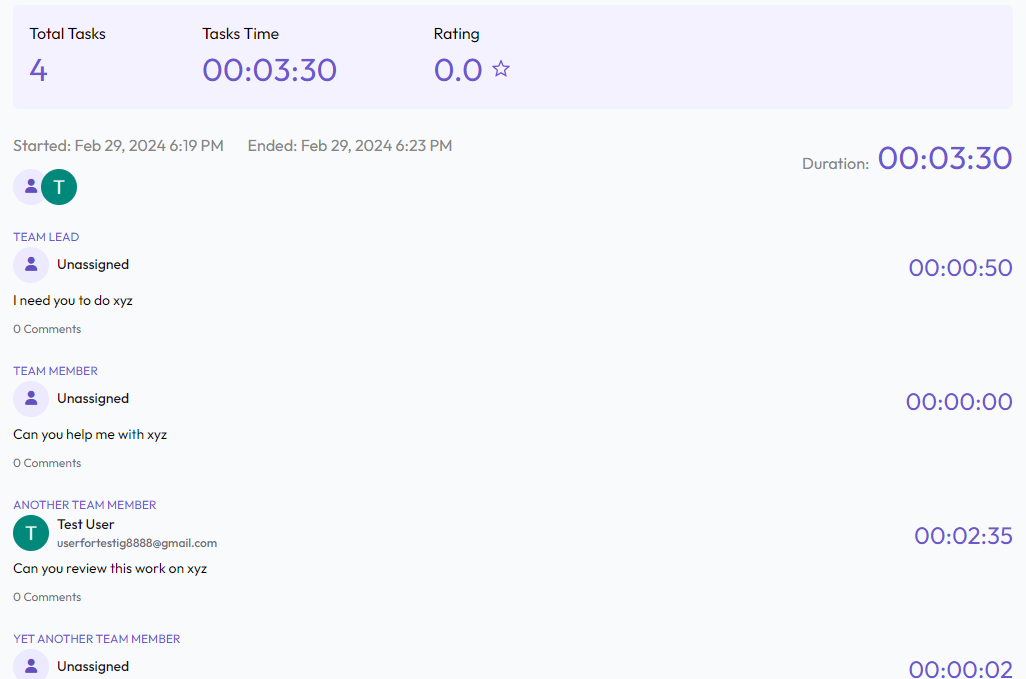Reviewing an Execution
Results
After the final task has been marked complete, the sequence execution can be considered done. Once this stage has been reached, the review phase of the execution can begin, and the team can fill out the Result and view the Metrics.
The "Result" tab is where final discussion and evaluation of the execution can take place. Here, the desired deliverable of the execution is detailed in full, outlining the desired result of the execution - what was the execution for, and what was supposed to happen by running it?
Once the execution is finished, the team can discuss in the outcome comments whether or not the desired outcome was met. After review and discussion, the team can then come to a conclusion about the quality of the execution and come up with steps to improve the proccess. Here, the team may leave their reviews of the results, evaluating how well the expected result matches the actual result, and determine ways to improve future execution runs to better achieve the desired goal.
For example, if a sequence execution is being run for improving the proccess of creating employee performance reports, a measurable result might be "The performance report for James was completed in less than 10 minutes and was approved by Jack. This is a measurable result to evaluate, making it easy to determine if the execution did or did not meet this requirement.

Metrics
After a team has discussed and reviewed the proccess of the sequence itself, they can then review the "Metrics" tab. Unlike the "Result" tab which facilitates discussion, the "Metrics" tab is a collection of statistics about the sequence. Discussion is very powerful, but becomes even more so when it is possible to connect the outcome of an execution with solid, reliable data. This tab will show the following:
- The amount of tasks in the execution
- The total time taken for the completion of all tasks
- The average review rating from the "Results" page
- The start and end date
- The amount of time each task took to complete
This data can greatly help in the evaluation of the success or failure of a sequence. The most important element of the "Metrics" page is the allowance of a team to see clearly which tasks took the most and least amount of time. Being able to pinpoint bottlenecks can help a team's future executions to a great extent, and allow more clarity on how to improve future sequences.

Follow up and Improvement
Once a team has finished an execution, they are encouraged to modify the sequence to improve their proccess for future runs. Each execution run will track the version of the sequence seperately from the latest version. Any old execution runs will display the tasks from the sequence version it was run on, instead of the latest changes.
This way, a team can run a single sequence many times, modifying it throughout, without losing the original contexts of previous execution runs, which better allows for retrospectives on old execution runs without the execution run being contaminated by new improvements and modifications to the original sequence.
New execution runs will always be on the latest version of the sequence, so that new changes and improvements can be evaluated in the new execution.